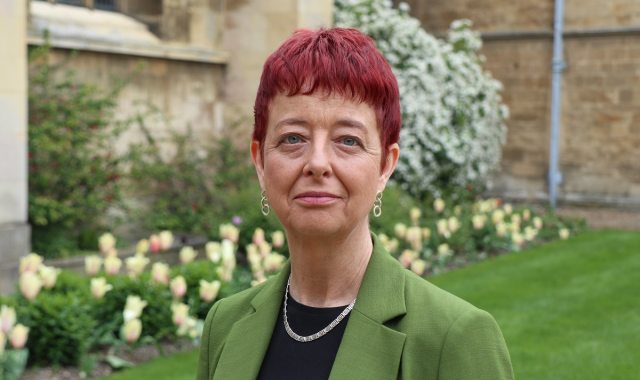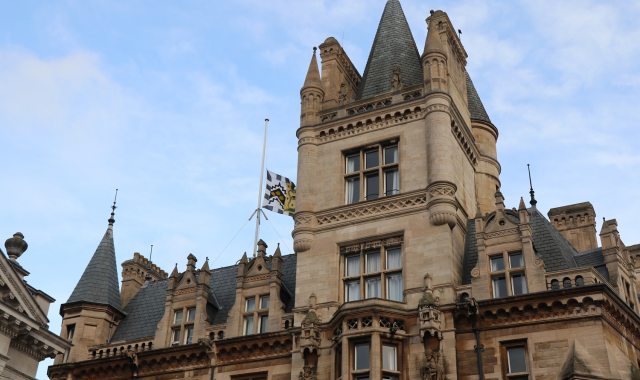Detecting cancer using drops of blood
- 11 July 2022
- 3 minutes
Angela An (PhD in Medical Science 2019) is in the third year of her doctoral studies based at the Cancer Research UK Cambridge Institute and has recently attended in-person conferences.
Angela, Austrian-born Chinese, completed her medicine degree in Innsbruck and was supported by Gonville & Caius College to attend the Circulating Nucleic Acids in Plasma and Serum (CNAPS) Conference in San Francisco, United States in May. She also participated in The European Association for Cancer Research (EACR) Conference on Liquid Biopsies in Bergamo, Italy, presenting her PhD work as oral presentations at both events.
She says: “It was a very rewarding experience to finally attend in-person conferences again after the COVID-induced hiatus. I especially enjoyed presenting and discussing my research findings to the wider liquid biopsy community face to face.”
After reading a MSc in Nanotechnology and Regenerative Medicine at UCL, Angela moved to the University of Cambridge for a PhD under the supervision of Mr Amit Roshan, PhD, and Professor Nitzan Rosenfeld, PhD, who is leading the Liquid Biopsies and Cancer Diagnostics Group.
Caius was her first-choice college when applying to Cambridge for its strong reputation and long-standing tradition in medicine and the sciences. “It is nothing short of inspiring to reflect that giants like Francis Crick, William Harvey and Stephen Hawking used to walk the same historical grounds,” Angela adds. She also very much enjoys the international, interdisciplinary and inclusive environment she experiences here at Caius, nurturing work-related discussions and genuine friendships.
Regarding her research Angela explains: “When cells die, they release DNA into the bloodstream, and in cancer patients, a tiny fraction of this free-floating DNA originates from the tumour, which is thus called circulating tumour DNA, short ctDNA. Contrary to conventional biopsies, such ’liquid biopsies’ may inform physicians about the tumour via a simple blood draw.”
She adds: “Advances in technology now enable more sensitive and accurate detection of ctDNA than previously possible, and also facilitate the detection of ctDNA in smaller amounts of blood, even in the form of dried blood spots which is the focus of my PhD.”
Preliminary data from ongoing studies indicate that ctDNA can be detected in samples collected via finger-prick, and that dried blood spot ctDNA tumour fraction mirrors treatment responses in pre-clinical models. Although current studies are set in the metastatic disease setting where it is more likely to detect ctDNA due to high tumour burden present, there is interest to push towards earlier disease stages.
“The prospect to detect cancer in something as simple to collect as a dried blood spot is very, very exciting,” Angela says.
“Prevalent ctDNA sampling strategies are logistically challenging and resource consuming as it involves extensive staffing and time sensitive sample preparation. Finger-prick collection may ease the practical constraints around blood sampling, and may offer new possibilities in ctDNA collection and application.”
Enthused by her current findings which Angela for the first time presented at the CNAPS and EACR conferences, she is now excited to take the next steps towards utilising blood spot ctDNA in patient applications.
Ultimately, Angela aspires to become a clinician-scientist. This represents a demanding commitment. However, encouraged by her mentors and motivated by her peers, she is keen on taking this career path.
Angela, pictured in front of Caius’ Gate of Honour, reflects: “If you haven’t spent a considerate amount of time in research, you don’t know about the hurdles of taking findings from bench to bedside. At the same time, having the clinical or medical knowledge is essential in help identifying the right questions. Interdisciplinary dialogue is pivotal on the way to transform patient care, and I believe that clinician-scientists are important bridge builders in that effort.”


